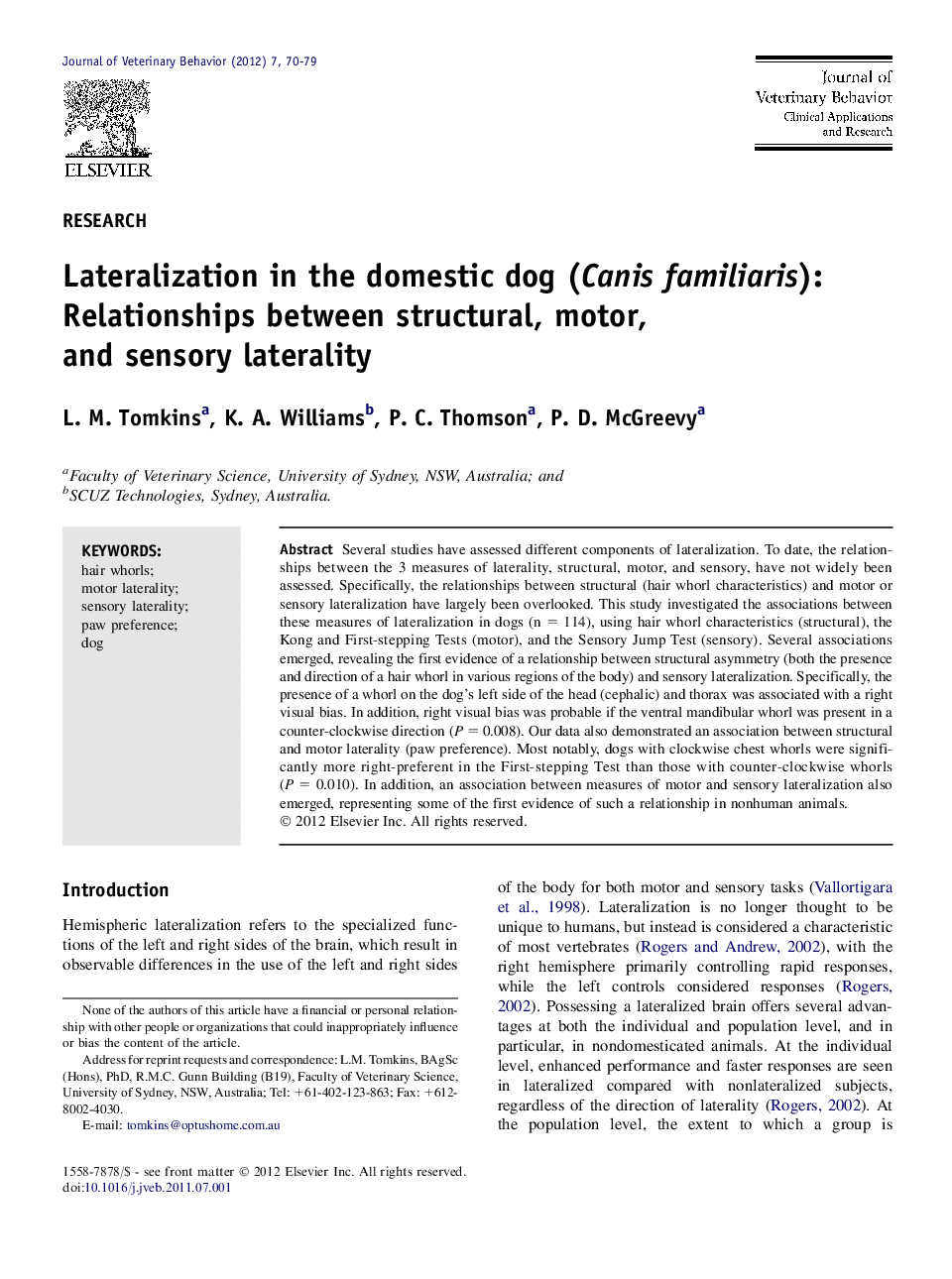| Article ID | Journal | Published Year | Pages | File Type |
|---|---|---|---|---|
| 2399725 | Journal of Veterinary Behavior: Clinical Applications and Research | 2012 | 10 Pages |
Several studies have assessed different components of lateralization. To date, the relationships between the 3 measures of laterality, structural, motor, and sensory, have not widely been assessed. Specifically, the relationships between structural (hair whorl characteristics) and motor or sensory lateralization have largely been overlooked. This study investigated the associations between these measures of lateralization in dogs (n = 114), using hair whorl characteristics (structural), the Kong and First-stepping Tests (motor), and the Sensory Jump Test (sensory). Several associations emerged, revealing the first evidence of a relationship between structural asymmetry (both the presence and direction of a hair whorl in various regions of the body) and sensory lateralization. Specifically, the presence of a whorl on the dog’s left side of the head (cephalic) and thorax was associated with a right visual bias. In addition, right visual bias was probable if the ventral mandibular whorl was present in a counter-clockwise direction (P = 0.008). Our data also demonstrated an association between structural and motor laterality (paw preference). Most notably, dogs with clockwise chest whorls were significantly more right-preferent in the First-stepping Test than those with counter-clockwise whorls (P = 0.010). In addition, an association between measures of motor and sensory lateralization also emerged, representing some of the first evidence of such a relationship in nonhuman animals.
